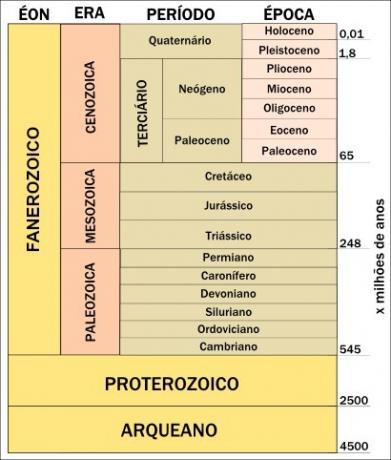Man did not always live in cities, the first inhabitants were nomads, so they did not have fixed residence and lived off hunting, fishing and gathering, later they left this condition to become producers.
Since then, man has been agglomerating in urban centers and developing economic activities. Thus, the urbanization process has two remarkable phases, the first occurred with the Industrial Revolution at the end of the 18th century, this event caused a huge migration, people who inhabited rural areas left for the cities, but this happened only in the countries involved in the revolution and not in scale planetary. The second took place after World War II, but this one was not motivated by industrialization, there was an exodus rural mass triggered by urban allure, better living conditions, study opportunities and work.
The urbanization process occurred essentially due to the displacement of people from rural areas towards cities, which are characterized by the agglomeration of people in a delimited area and by the productive activity, which ceases to be agricultural and becomes industrial, commercial; and also for carrying out the provision of services.
This process did not take place simultaneously in the world, given that the industrialized countries had already gone through this period, in the In the case of developing and late industrializing countries, urban growth is currently taking place at an accelerated and messy. The lack of urban planning has favored the proliferation of serious problems, such as slums, lack of infrastructure, violence, pollution of all kinds, unemployment and many others.
Do not stop now... There's more after the advertising ;)
The rates of people living in cities fluctuate according to the continent, country and internal areas, as Africa has 38% of its inhabitants live in cities, in Asia they are 39.8%, in Latin America 77.4%, in North America 80.7%, in Europe 72.2% and in Oceania 70,8%. In another approach, taking rich and poor countries as a principle, there is a huge disparity in the percentage of urban and rural population. In Belgium, for example, 97% of people live in urban centers while in Rwanda this rate drops to 17%.
The phenomenon of urbanization has produced cities with a population of over 10 million, these are called megacities or megalopolises such as, for example, Tokyo (Japan) with 35.2 million inhabitants, Mexico City (Mexico) with 19.4 million, New York (United States) with 18.7 million and many other cities throughout the country. world.
By Eduardo de Freitas
Graduated in Geography
Would you like to reference this text in a school or academic work? Look:
FREITAS, Eduardo de. "Urbanization in the world"; Brazil School. Available in: https://brasilescola.uol.com.br/geografia/urbanizacao-no-mundo.htm. Accessed on June 27, 2021.
The Industrial Revolution transformed the lives of the world population, who moved to cities in search of work in industries. About the urbanization of the world population, judge the following alternatives:
1. ( ) World urbanization began in Japan, the main industrial and exporting center of the 19th century, which led to a reduction in the mortality rate.
2. ( ) The advance of world urbanization has transformed the natural or vegetative growth of the population.
3. ( ) Sanitary conditions were improved in cities, resulting in a reduction in endemic and epidemic diseases.

